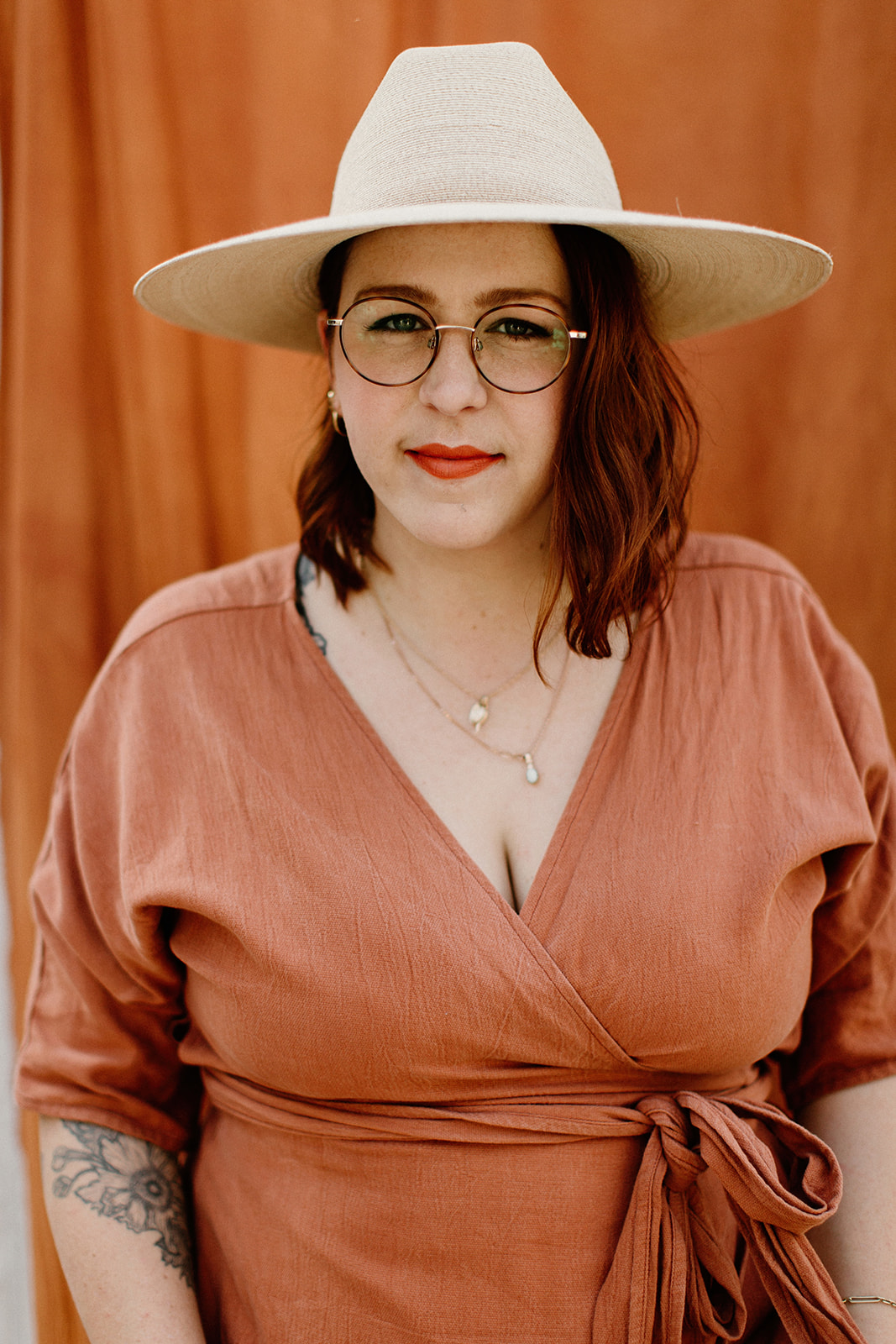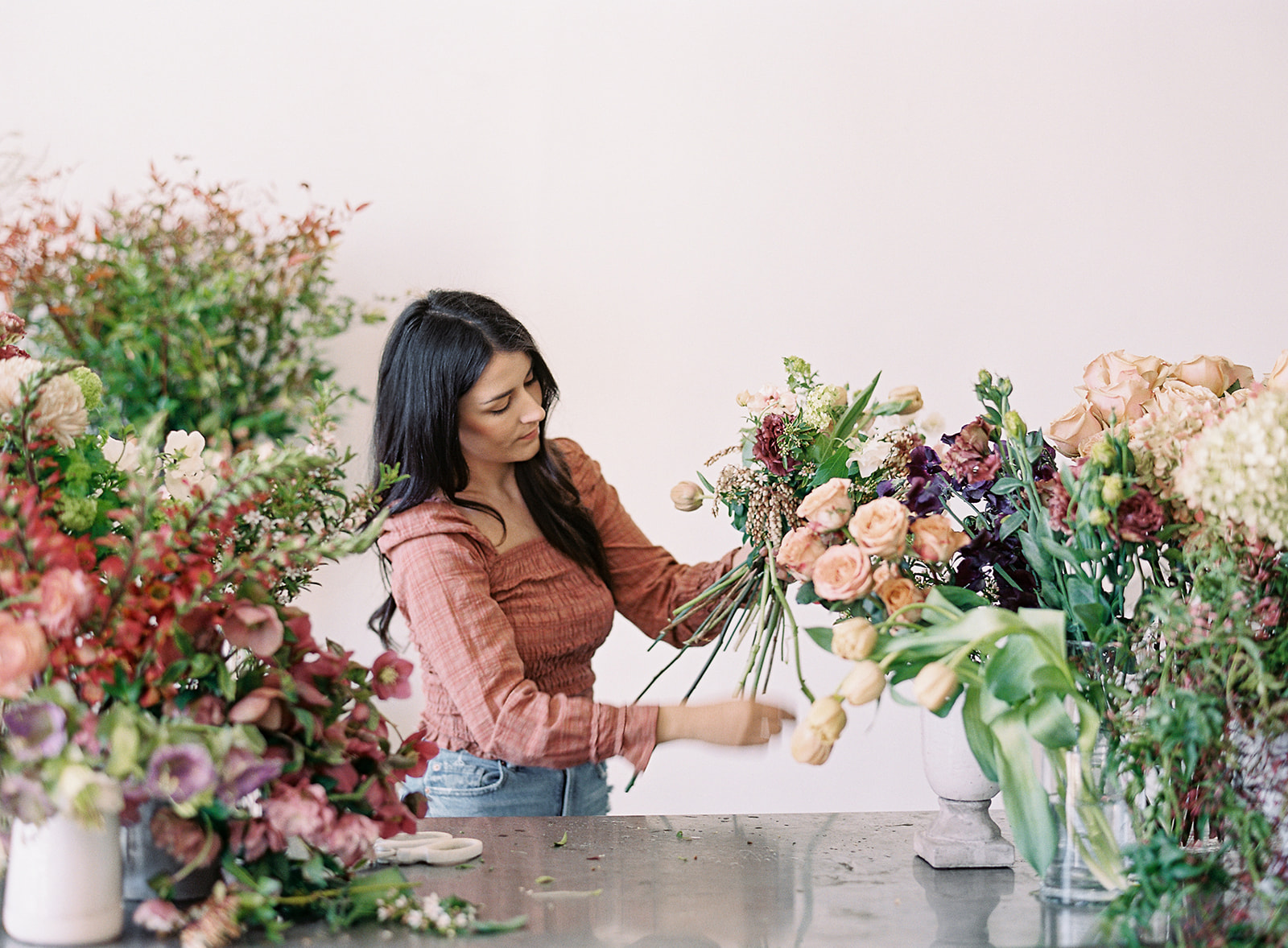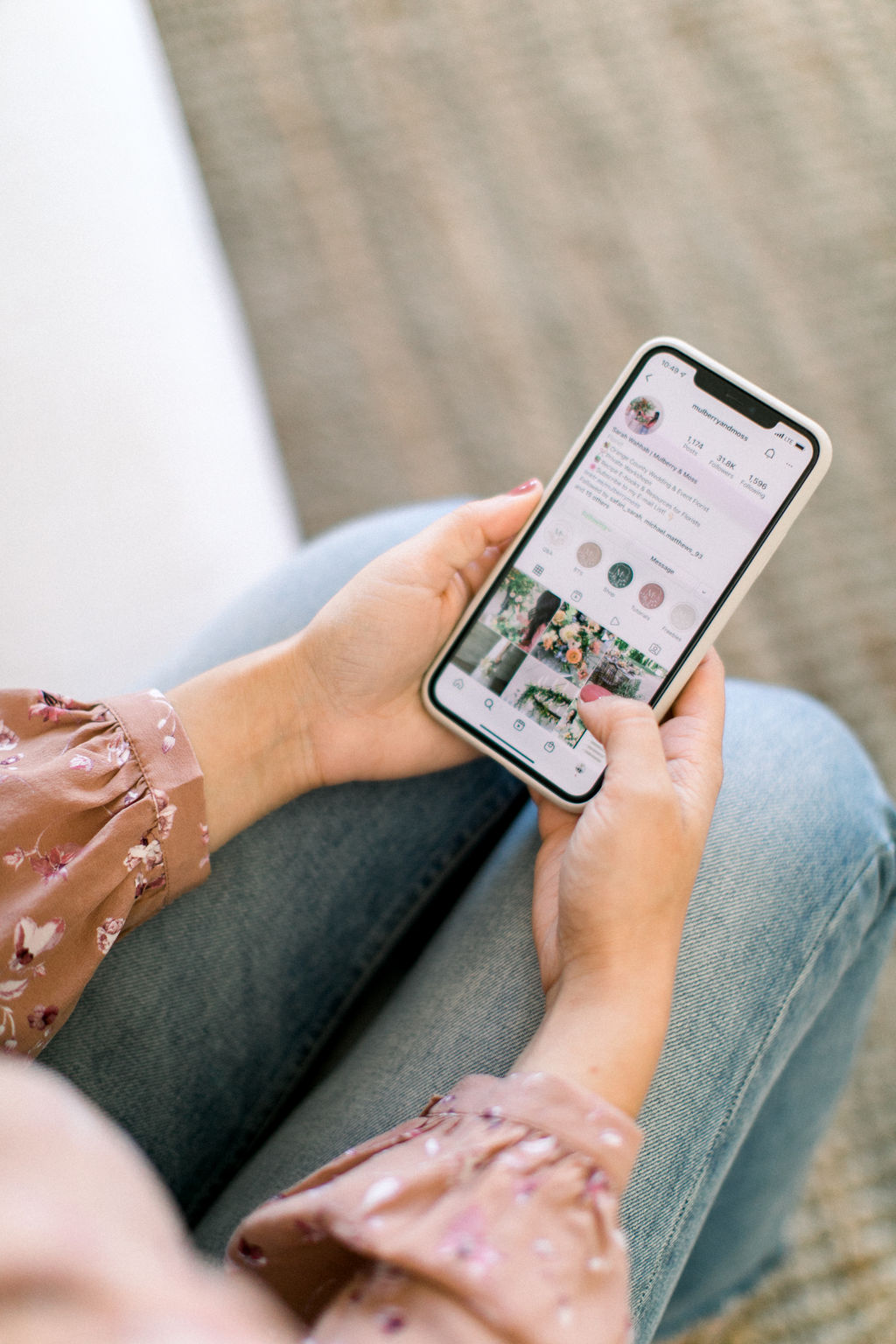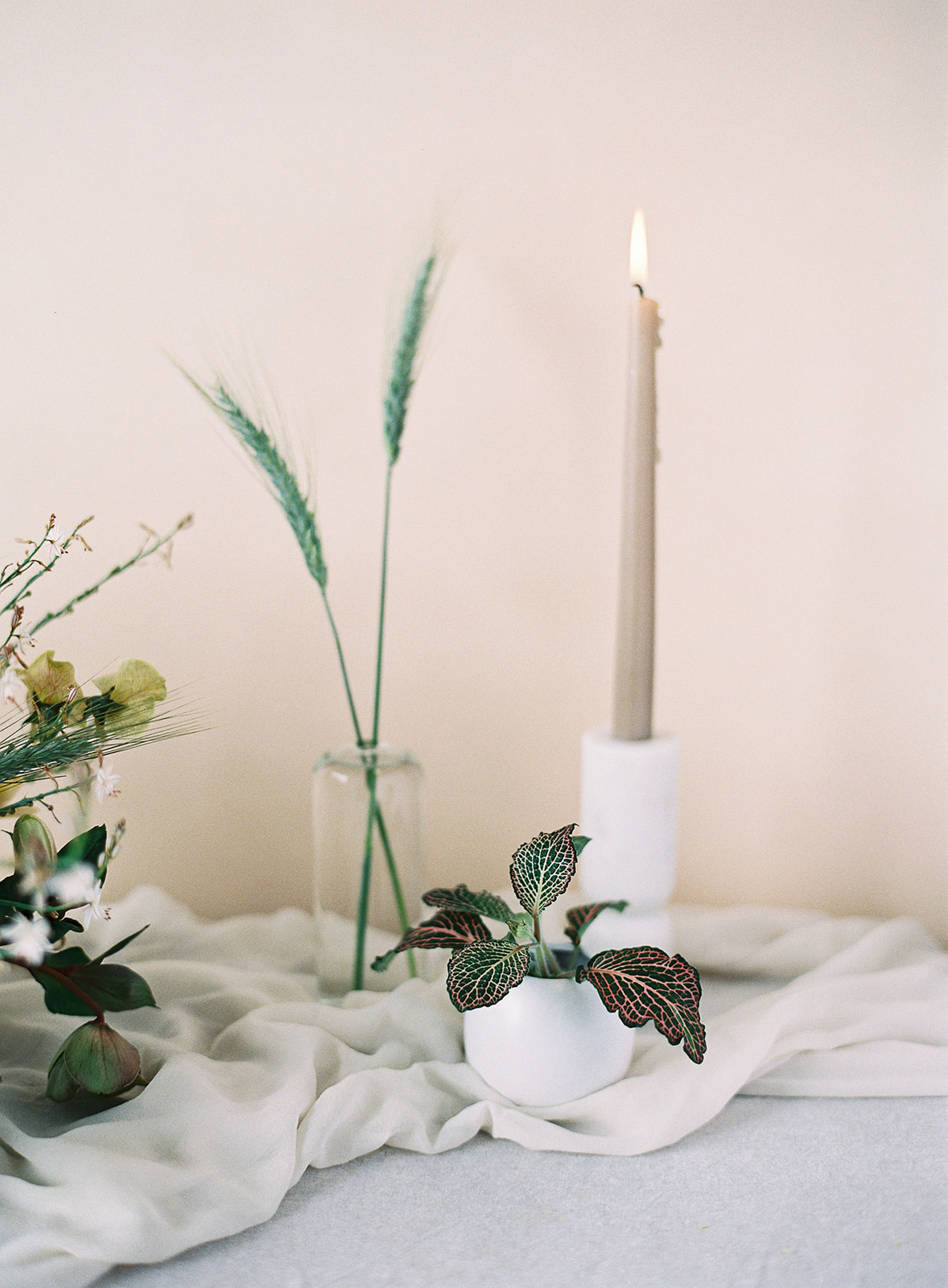Do you struggle with overspending on your weddings and notice that it’s eating away all your profit? Trust me, I’ve been there. We are artists after all, and we love creating. I know that sometimes budgets and numbers just feel like they’re hindering your creativity and standing in the way of being able to fully express yourself.
What if I told you that it was ignoring those numbers that’s actually hindering you from being able to fully express yourself?
This was a truth that I was definitely blind to for a very long time. When I started my business, I was so excited to start creating for people who wanted to hire me, and I was pouring my heart and soul into every design. And a lot of the time, that meant sparing no expense at the flower market. Of course I’d try to stay on budget … But most of the time, I was letting my passion win me over and letting my budget go out the window.
I told myself this was helping me build my brand and attract my ideal clients.
But I realize now looking back, this was actually just holding me back and keeping me stuck in the same place. I now recognize that in my first few years of my business I was giving a little too much away to my clients and, frankly, spending WAY too much on flowers. In those early years, I was so focused on getting my name out there and getting as much experience as possible that I would take every opportunity that came my way – even if it was to provide FREE work in exchange for the promise of exposure for my business. I was overspending on all of my weddings thinking that it would help enhance my portfolio, but half the time I would never even receive the professional photos, or I would receive the photos and the photographer’s editing style didn’t align with my brand. I would show up to a wedding and realize the thoughtfulness and intentionality of the overall design just wasn’t there. And the rest of the design didn’t really do them justice. Sometimes my clients would really appreciate the extra work and thought I had put in, but that part was hit or miss. Other times I would walk away feeling like I had given my all, and it went unnoticed. At the end of the day, I was still getting inquiries with budgets that limited my creativity and clients who didn’t really understand my value.
It was over the course of many years and a great deal of trial and error that I eventually got smart about my spending and how I was approaching each wedding, so that I wasn’t walking away from each job feeling like I was not fully getting the return on my investment.
There were a few strategies that I eventually began implementing, that really made a difference in not only being able to see more of a profit, but also seeing that profit lead to huge leaps forward in my business. And those are the exact strategies that I want to share with you today.
1 – I shifted my focus away from my own taste and artistic urges, and started paying close attention to the client’s values, so that I could better align my stem selections with their value system.
The ideal way to remain profitable is to deliver a product that aligns with the client’s value system. If they have budgeted $800 or $2000 for their wedding flowers, that says a lot about the value that they put on flowers. So it doesn’t make much sense to deliver them a premium product when what they are clearly seeking is quantity over quality. Some brides that reach out to me reach out because they are captivated by the particular flower varieties that they see used in my work. Others are just seeking more of an overall looks and feel. There are a lot of indicators of where a potential client places value, by the words they use and the inspiration imagery they send. If I look at a client’s pinterest board and see that all of their inspiration photos include novelty tulips and ranunculus, arranged in an airy and delicate way, or I see many up close detail shots with premium curated goods, this shows that they really appreciate fine details and can recognize premium flower varieties. If I look at their pinterest board and see more zoomed out images of an overall garden look, with large scale installations, and there is no clear connection between the flowers used, then this tells me they are simply looking for romance.
The smart business move is to deliver a product that appropriately reflects what they value as well as what they have to spend. And as the business owner you have the insight to be able to make appropriate choices on their behalf of what materials you use to create their designs. If I am price everything out and the provided budget doesn’t cover everything they’re asking for, for me, the way I decide to approach this is usually dependent upon the values of that specific client.
If it’s a client that I can see values the fine details, I will say, “I can see that you have very refined taste. I can assure you these flowers are well worth their weight in gold, and I am confident we can deliver the premium look that you are aiming for, but the pricing is going to be a bit above baseline due to the higher cost of these very special blooms. From there, I might offer suggestions for items that I would eliminate first if I were going to trim down the order.
On the other hand, if I am over budget on a proposal I’m creating for a bride who is maybe a bit less discerning and more so just looking for an overall look, I might double check my stem choices and make sure I am being smart with my selections. Does a 12ft by 12ft arch need to have garden roses and peonies? Probably not. Since this is a piece that is generally seen from a distance, if the budget is too restricting, a better use of those high end stems would be in smaller detail pieces that will be viewed up close. Maybe 1 or 2 peony stems in the welcome piece or in the bouquets would be money better spent. On that note, if a bride loves La Belle Epoque tulips which cost $3.00/stem, it doesn’t mean they need to be used all over the place. In fact, when it comes to premium items, I think sometimes less is more. A La Belle Epoque tulip is much better showcased on its own in a bud vase than shoved into a lush arrangement where it may just get lost.
These are the things that it would be wise to think about when crafting your orders to see if you can make the budget work without having to overspend to achieve a high-end look. These are also things you can explain to your client to help educate them, while also establishing trust and their confidence in you as a designer.
2 – I started collecting more detailed information from each client, like which other vendors I would be working with, to identify which weddings would be portfolio builders ahead of time.
One other way I started being more strategic and intentional about my spending and my flower selections was by getting to know the vendor team ahead of time. One mistake I made continuously in my early years was pouring my heart and soul and money into weddings thinking they would build my portfolio, only to find out that the bride hired a friend as their photographer or the photos just weren’t what I was expecting, or I never even got my hands on the photos at all. And it turned out all the extra love I put into that wedding was all for nothing.
And I eventually got smarter and realized that there was a simple fix to this problem: All I needed to do was find out a bit more about the vendors I would be working with before the wedding, and before even designing the proposal.
I now have additional questions in my questionnaire asking who the hired planner and photographer are for the wedding, so that way I can research those vendors, get to know them, form a connection and most importantly, get an idea of what I can expect on the wedding day. My main priority and what I’m being hired for is to deliver florals that are in line with the client’s vision. Things like receiving a gallery for my portfolio and forming a planner connection… those things are a bonus but they’re not a guarantee. What I realized I was doing before was I was making a lot of my decisions assuming that these things were part of the deal. It caused me to make unwise money decisions but it also got in the way of serving my client in the best way possible.
By having this information before I begin the design proposal, I can make better informed decisions on whether my focus should be strictly on profitability or if it would be wise for me to try and do some upselling. Then, if the upselling is unsuccessful, it’s at that time that I can then decide if taking a slight profit hit would be worth it, because I have a better idea of the results I can expect. If i determine that this is wedding looks like it could be a potential portfolio piece for me, then those few extra bunches to embellish on the actual wedding day could be money well spent. However – if you’re going to spend more than the budget allows – there’s a way to do that without having your client be in the dark on the extra value you’re putting in. If you just overspend at the market, that comes out of your profit. If you’re going to lose profit, you might as well be transparent about it so that the client knows that they’re getting more than the value, and this way you’re also not misrepresenting your designs in the pricing. So I’ll give you an example of what I mean by this – Quoting a client an arch at $1000 and giving them a $2000 arch doesn’t do justice to your value, and it gives the client a misguided understanding of what things are worth. However, by quoting them $2000 and offering them 50% off – at least this way they understand the value that they are getting, and you avoid misrepresenting your value. There is nothing wrong with being transparent with your client and saying, “I’m trying to establish my portfolio and I really love the design direction of your wedding. I would love to offer you a discount because I think that this will really help my business.”
Your first objective should always be to try and upsell your client if you can through your sales pitch – which is a whole separate topic and I promise you we’ll get to that in a future episode – but in cases where you are working with a client who’s budget is tight and you want to leverage that wedding to your advantage, this can be another way to do that. Offering a discount is not against the rules. It’s a strategy that’s used in every trade. But offering a discount is much different than undercharging for your worth. Make sure that your pricing is clear.
The main takeaway with this strategy is that by learning a bit more details about the wedding, specifically about your vendor team and being able to do some research ahead of time can help you to avoid pouring too many resources into a job that isn’t going to give you the return on your investment that you might have anticipated.
The same strategy goes for styled shoots. If someone is asking you to participate in a styled shoot or asking you for free services for a marketing opportunity, make sure you ask what exactly you are going to get in return for your efforts. Who else is a part of the event? Will those people be present at the event? What is the exposure that you will receive? Will you have your name shouted out in a dedicated post? Or will you simply have your business in fine print on the event program? If it’s an editorial, have they pre-submitted to any publications? If so, which ones? If not, do they plan to submit? Do some digging on that person’s profile – and see if they have history being featured in publications in the past. Do they plan to rent furniture, hire a professional model and rent a real gown? Is that photographer getting paid for this job? Is it possible there could be room in the budget for florals? It took me years to realize that it was okay for me to ask for compensation for collaborations. I would always assume they wanted the flowers for free, so I wouldn’t bother to ask if they could at least cover my flower costs. I had situations where I showed up to a styled shoot with all my beautiful free florals and realized that the photographer was hosting a workshop and was collecting an income from each of the attendees, and I wasn’t being compensated. I’ve had shoots where I showed up expecting styled rented furniture and a curated tabletop based on the inspiration board, and it turned out to be kind of thrown together with sort of mismatch items they clearly had already lying around, with not much artistic thought put into it. That was a huge disappointment and I learned my lesson that it’s always good to know ahead of time what you can expect – especially when you’re donating your materials and time, which is so valuable.
3 – I prioritized getting my markup and pricing sorted, and built in a buffer to mitigate overspending tendencies.
Once I started examining each wedding opportunity more strategically, I was able to prioritize much more wisely. Once I had identified the weddings that weren’t really going to serve my portfolio or offer any value networking opportunities, my main motivator for these weddings became my profit margin. This allowed me to detach myself from my artistic tendencies and get comfortable with getting more frugal with my spending.
There were a few strategies I adopted to help me stay on budget when building my proposals – including helping the client to prioritize their needs from their wants, and making suggestions for the greatest impact, as well as being smart with my recipes and flower selections according to the client’s values as I mentioned in step 1.
But even when we have our pricing dialed in on the backend, there is always going to be those times when we are at the market and see that extra special something – like that spirea or those japanese ranunculus that we just HAVE to have. Trust me, it happens to the best of us.
If you know you have the tendency to over buy at the wholesaler, my suggestion would be to build in buffers into your pricing structure, leaving some money aside for you to shop when you get to the market. Being really strict with my recipes in the ordering stage and leaving a few dollars leftover in my budget has helped me to make sure that even when I spend a few extra dollars at the market, it’s not pushing me over my overall flower budget. So if my available budget for the arch is $500 when I’m building my recipes for my flower order, I will try to keep the pre-order total $400 or $450. Then I will have some money leftover to shop for those extra special items.
If there’s a bunch of tulips that you just HAVE to have, instead of throwing 20 bunches on your cart, consider just buying one bunch and putting it in the welcome piece or another arrangement that will be highly showcased. And make sure the event photographer knows to grab a shot of that extra-special flower moment.
4 – I began prioritizing profitability and using that profit to reinvest in my own creative shoots to optimize my portfolio for marketing.
Focusing on profitability is not always fun. In the beginning, it can be really challenging to get into the mindset of making profit our main focus, especially as it can feel limiting to our creativity in a time when you’re trying to build up your portfolio. Over time, I’ve learned that detaching yourself from the urge to go wild with creativity and focusing in on profit becomes easier when your business becomes your main priority. If this is difficult in the beginning, maybe that’s because you’re focusing a bit too hard on the art, which is for many of us – a huge part of the reason we decided to start a business. I finally feel like I have my priorities straight now, but it took me a very long time to get there. And it’s in those early days that I wish I had been a bit more strategic with where I invested my resources.
Looking back, I can now see that if i had prioritized profit first, and been patient, I would have had plenty of money leftover to use in marketing my business on my own terms without being restricted to following the client’s vision.
I wish I had had the skill and the wisdom to realize that while I thought I was investing in marketing myself, I really was just spinning my wheels a lot of the time. After I became smarter about my profits, I was able invest in several of my own styled shoots where I was able to network with vendors that I really wanted to work with, and have complete freedom with what I wanted to design, and the flowers I wanted to use. And this was when everything really wanted to change. Once I had the funds to fully express my brand I started attracting my ideal clients and was able to charge more because I had this amazing portfolio of designs that were created under no restraints. Instead of trying to work with my clients designs, on limited budgets, and taking on meaningless collaborations that were serving another brand’s goals and disregarding my time and value completely.
So if i could go back and do one thing differently, It would be to prioritize profit from the beginning, and be patient so that I could really invest in my brand with my own artistic purpose and vision, and collaborate and start networking with the people who were going to help push my brand forward, and who would actually send me business.
I’d love to talk more about my experience with styled shoots and how they helped me transform and elevate my brand – but that, too, will have to wait for another episode.
In Conclusion…
For today, the main thing I want you to take away from this is that being profitable , no matter how boring and unexciting it may seem in the beginning, is the KEY to being able to fully express your creativity. It’s what will drive your business forward to a place where you can be more intentional with your investments – to scale your business, market yourself in a quality way and really start to attract your ideal clients. Getting there just takes a bit of a mindset shift – and these were the few strategies that worked for me, and I know they can help you too.
First, I shifted my focus away from my own taste and artistic urges, and started paying close attention to the client’s values, so that I could better align my stem selections and be smarter with my recipes.
-I started collecting more detailed information from each client, like which other vendors I would be working with, to identify which weddings would be portfolio builders ahead of time.
-I prioritized getting my markup and pricing sorted, and built in a buffer to mitigate overspending tendencies.
-I began prioritizing profitability and using that profit to reinvest in my own creative shoots to optimize my portfolio for marketing.
Profit has to come first, then you can focus on marketing and full artistic expression.
For the first several years of my business, I was doing it all backwards and I didn’t realize how much it was holding me back and actually hindering my growth and my ability to reach my full potential. But once I was able to slowly adjust my process to be more strategic with how I approached each wedding, that was when I saw things really change for my business. All the frustration and the financial stress of trying to make budgets work, finally fell away once I was able to build myself up to a place where my clients now know my value, they come to me ready to pay my minimum, the planners and vendor relationships I have built, send me business that aligns with my brand, and I’m able to truly create my best work. Of course there are always times that we are faced with the challenge of making dreams happen on a budget, but all of that work becomes that much easier and comes more naturally once you get into the habit of shifting your focus to profitability. When you allow your business and your bottom line to become your main priority, that’s when you can begin categorizing, prioritizing, strategizing to make each wedding work for you.
I hope today is the day that you start really thinking about the future of your business. When you notice yourself getting distracted by your own vision, think about all of the amazing work you’ll be able to do once you are able to reach that next threshold in your business where you can actually reach your ideal clients. Keep your focus on serving your clients well and being smart and strategic with making the most of the budget you have in front of you, And remember that profit is what’s really going to drive your business forward at the end of the day.
I know there’s so much more success waiting for you. Let’s cheers to that!






add a comment
+ COMMENTS